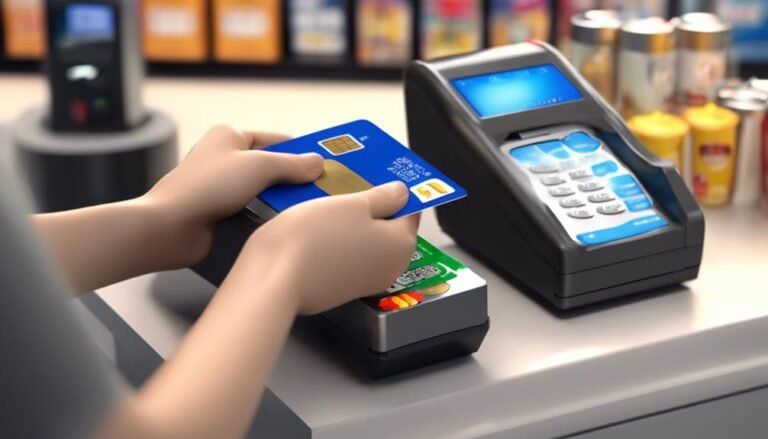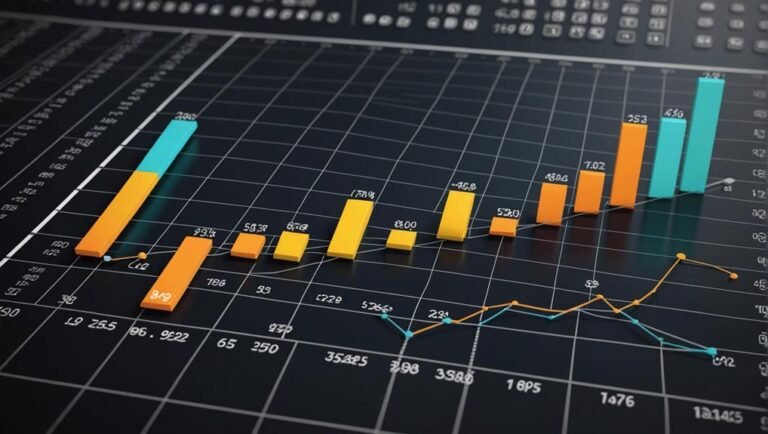What Is Behavioral Economics? Theories, Goals, and Applications
Behavioral economics blends traditional economic theory with psychology to analyze decision-making processes. Remarkably, Tversky and Kahneman pioneered prospect theory, challenging human rationality. Richard Thaler's work on nudge theory garnered him a Nobel Prize in 2017, marking a shift toward behavioral economics from rational choice theory. This field explores the influence of emotions, cognitive biases, and design interventions to improve decision-making. Core principles like heuristics and framing effects shape human behavior analysis. Real-world applications involve understanding consumer behavior, integrating psychology into economic models, and optimizing outcomes for businesses and consumers. Explore how behavioral economics shapes economic decisions and human behavior further.
Key Takeaways
- Integration of psychology into economic theory.
- Identifying cognitive biases and heuristics.
- Applying behavioral insights to improve decision-making.
- Understanding emotions' impact on choices.
- Tailoring strategies to align with consumer preferences.
Evolution of Behavioral Economics
The evolution of behavioral economics has transformed the landscape of traditional economic theory by integrating insights from psychology into the decision-making processes of individuals and institutions. Notable figures like Tversky and Kahneman paved the way for this transformation by challenging the assumption of human rationality in decision-making.
Richard Thaler's Nobel Prize in 2017 further solidified the importance of behavioral economics in understanding how individuals deviate from rational choices. This shift from the rational choice theory to behavioral economics acknowledges that humans are not always perfectly rational actors and explores the reasons behind irrational decisions.
Key Figures and Contributions
Among the prominent figures in the field of behavioral economics, significant contributions have been made by individuals who have reshaped our understanding of economic decision-making processes. Notable figures include:
- Daniel Kahneman and Amos Tversky:
- Pioneered prospect theory and identified cognitive biases.
- Their work laid the foundation for behavioral economics.
- Kahneman's Nobel Prize in Economics in 2002 recognized their groundbreaking research.
- Richard Thaler:
- Known for his work on nudge theory and mental accounting.
- Awarded the Nobel Prize in Economics in 2017 for his contributions to behavioral economics.
- Thaler's research highlighted the importance of incorporating psychological insights into economic models.
- Evolution of Behavioral Economics:
- Shift from traditional economic models to understanding the role of psychology.
- Focus on human behavior and decision-making processes.
- Integration of key factors like cognitive bias and bounded rationality.
Factors Shaping Behavioral Decisions
Exploring the intricate interplay between cognitive biases and environmental cues offers valuable insights into the factors that shape behavioral decisions in the domain of behavioral economics. Emotions play a significant role in decision-making, influencing individuals to make choices that may not align with rationality. Decision-making biases, such as confirmation bias and anchoring bias, can lead individuals to make suboptimal decisions. These biases are often exacerbated by emotional responses to situations, further clouding judgment. Understanding these influences is essential in designing interventions to nudge individuals towards better decision-making. The table below provides a summary of the key factors that shape behavioral decisions:
| Factors | Description |
|---|---|
| Influence of Emotions | Emotions play a significant role in decision-making, often leading to biased choices. |
| Decision Making Biases | Biases such as confirmation bias and anchoring bias can distort decision-making processes. |
Core Principles in Behavioral Economics
Understanding the fundamental principles that underpin behavioral economics provides a framework for comprehending the complexities of decision-making processes influenced by cognitive biases and emotional responses. When delving into core principles in behavioral economics, two key concepts stand out:
- Heuristic Influence: Decision-making often relies on mental shortcuts or heuristics, leading to efficient but potentially biased outcomes.
- Framing Effects: The way information is presented can have a substantial impact on decisions, showcasing how individuals are sensitive to how choices are framed.
- Loss Aversion: People tend to strongly prefer avoiding losses to acquiring gains, indicating a psychological bias affecting decision-making processes.
These principles shed light on the intricate interplay between human behavior and economic choices, shaping the field of behavioral economics.
Real-World Applications and Impacts
The practical implementation of behavioral economics principles in real-world scenarios underscores the transformative impact on decision-making processes and economic outcomes. Behavioral economics has profoundly influenced consumer behavior and market strategies, leading to a deeper understanding of how individuals make choices and interact in markets. By integrating psychological insights into economic models, businesses can tailor market strategies to better align with consumer preferences and behaviors. This approach has been instrumental in shaping pricing strategies, product packaging, and marketing campaigns to appeal to consumers' cognitive biases and decision-making processes. Ultimately, the application of behavioral economics in real-world settings has shown promise in optimizing outcomes for both businesses and consumers alike.
| Consumer Behavior | Market Strategies | Impacts |
|---|---|---|
| Decision-making insights | Tailored marketing tactics | Enhanced consumer engagement |
| Cognitive biases | Pricing optimization | Improved market competitiveness |
| Behavioral patterns | Product placement | Increased customer satisfaction |
| Purchase motivations | Targeted advertising | Boosted sales and brand loyalty |
| Emotional responses | Consumer segmentation | Enhanced brand perception and loyalty |
Conclusion
To sum up, behavioral economics serves as a beacon illuminating the intricate web of human decision-making processes. Like a tapestry woven with threads of cognitive biases and bounded rationality, it reveals the underlying factors shaping our choices.
Through the lens of choice architecture and cognitive bias, this field offers invaluable insights into pricing strategies, marketing techniques, and public policy formulation, ultimately shaping our understanding and influencing of human behavior.







